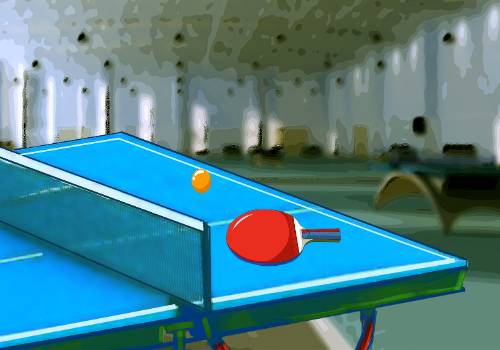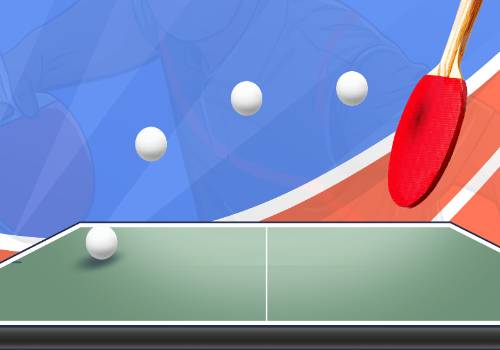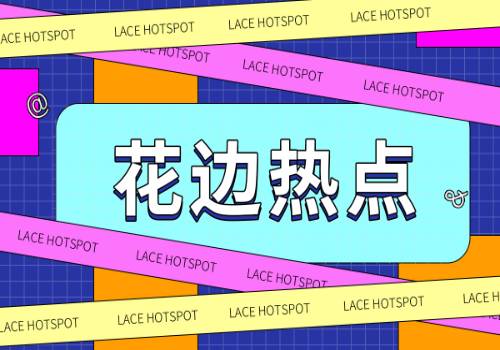In pics: UNESCO's world heritage, rock paintings in China's Guangxi
This photo taken on Aug. 8, 2023 shows a part of Huashan rock paintings in Ningming County, Chongzuo City, south China"s Guangxi Zhuang Autonomous Region. The Zuojiang Huashan site is home to more than 1,900 well-preserved drawings on the face of the Huashan mountains along the Zuojiang River and its tributary Mingjiang River in Chongzuo.
 (资料图)
(资料图)
The brownish red paintings, created from the Warring States Period (475-221 BC) to East Han Dynasty (25-220), depict the sacrifices of the Luoyue people, ancestors of today"s Zhuang ethnic minority.
It is said that the major images of the paintings are frog-shaped people -- a totem of the Zhuang ethnic group. Some of those paintings also show sports scenes.
It remains a mystery how the Luoyue managed to paint on the rocks.
The group of rock paintings was included into UNESCO"s world heritage list in 2016. (Xinhua/Zhang Ailin)
This photo taken on Aug. 8, 2023 shows a part of Huashan rock paintings in Ningming County, Chongzuo City, south China"s Guangxi Zhuang Autonomous Region. The Zuojiang Huashan site is home to more than 1,900 well-preserved drawings on the face of the Huashan mountains along the Zuojiang River and its tributary Mingjiang River in Chongzuo.
The brownish red paintings, created from the Warring States Period (475-221 BC) to East Han Dynasty (25-220), depict the sacrifices of the Luoyue people, ancestors of today"s Zhuang ethnic minority.
It is said that the major images of the paintings are frog-shaped people -- a totem of the Zhuang ethnic group. Some of those paintings also show sports scenes.
It remains a mystery how the Luoyue managed to paint on the rocks.
The group of rock paintings was included into UNESCO"s world heritage list in 2016. (Xinhua/Fei Maohua)
This combo photo shows a person climbing a cliff (L, file photo) and a Huashan rock painting depicting cliff climbing (photo taken by Xinhua photographer Fei Maohua on Aug. 8, 2023) in Ningming County, Chongzuo City, south China"s Guangxi Zhuang Autonomous Region. The Zuojiang Huashan site is home to more than 1,900 well-preserved drawings on the face of the Huashan mountains along the Zuojiang River and its tributary Mingjiang River in Chongzuo.
The brownish red paintings, created from the Warring States Period (475-221 BC) to East Han Dynasty (25-220), depict the sacrifices of the Luoyue people, ancestors of today"s Zhuang ethnic minority.
It is said that the major images of the paintings are frog-shaped people -- a totem of the Zhuang ethnic group. Some of those paintings also show sports scenes.
It remains a mystery how the Luoyue managed to paint on the rocks.
The group of rock paintings was included into UNESCO"s world heritage list in 2016. (Xinhua)
This photo taken on Aug. 8, 2023 shows a part of Huashan rock paintings depicting a ceremony in Ningming County, Chongzuo City, south China"s Guangxi Zhuang Autonomous Region. The Zuojiang Huashan site is home to more than 1,900 well-preserved drawings on the face of the Huashan mountains along the Zuojiang River and its tributary Mingjiang River in Chongzuo.
The brownish red paintings, created from the Warring States Period (475-221 BC) to East Han Dynasty (25-220), depict the sacrifices of the Luoyue people, ancestors of today"s Zhuang ethnic minority.
It is said that the major images of the paintings are frog-shaped people -- a totem of the Zhuang ethnic group. Some of those paintings also show sports scenes.
It remains a mystery how the Luoyue managed to paint on the rocks.
The group of rock paintings was included into UNESCO"s world heritage list in 2016. (Xinhua/Zhang Ailin)
This photo taken on Aug. 8, 2023 shows a part of Huashan rock paintings in Ningming County, Chongzuo City, south China"s Guangxi Zhuang Autonomous Region. The Zuojiang Huashan site is home to more than 1,900 well-preserved drawings on the face of the Huashan mountains along the Zuojiang River and its tributary Mingjiang River in Chongzuo.
The brownish red paintings, created from the Warring States Period (475-221 BC) to East Han Dynasty (25-220), depict the sacrifices of the Luoyue people, ancestors of today"s Zhuang ethnic minority.
It is said that the major images of the paintings are frog-shaped people -- a totem of the Zhuang ethnic group. Some of those paintings also show sports scenes.
It remains a mystery how the Luoyue managed to paint on the rocks.
The group of rock paintings was included into UNESCO"s world heritage list in 2016. (Xinhua/Zhang Ailin)
Zhu Qiuping, a cultural relics protection expert, contemplates Huashan rock paintings in Ningming County, Chongzuo City, south China"s Guangxi Zhuang Autonomous Region, Aug. 8, 2023. The Zuojiang Huashan site is home to more than 1,900 well-preserved drawings on the face of the Huashan mountains along the Zuojiang River and its tributary Mingjiang River in Chongzuo.
The brownish red paintings, created from the Warring States Period (475-221 BC) to East Han Dynasty (25-220), depict the sacrifices of the Luoyue people, ancestors of today"s Zhuang ethnic minority.
It is said that the major images of the paintings are frog-shaped people -- a totem of the Zhuang ethnic group. Some of those paintings also show sports scenes.
It remains a mystery how the Luoyue managed to paint on the rocks.
The group of rock paintings was included into UNESCO"s world heritage list in 2016. (Xinhua/Zhou Hua)
This photo taken on Aug. 8, 2023 shows a part of Huashan rock paintings depicting pregnant women in Ningming County, Chongzuo City, south China"s Guangxi Zhuang Autonomous Region. The Zuojiang Huashan site is home to more than 1,900 well-preserved drawings on the face of the Huashan mountains along the Zuojiang River and its tributary Mingjiang River in Chongzuo.
The brownish red paintings, created from the Warring States Period (475-221 BC) to East Han Dynasty (25-220), depict the sacrifices of the Luoyue people, ancestors of today"s Zhuang ethnic minority.
It is said that the major images of the paintings are frog-shaped people -- a totem of the Zhuang ethnic group. Some of those paintings also show sports scenes.
It remains a mystery how the Luoyue managed to paint on the rocks.
The group of rock paintings was included into UNESCO"s world heritage list in 2016. (Xinhua/Fei Maohua)
This photo taken on Aug. 8, 2023 shows a part of Huashan rock paintings in Ningming County, Chongzuo City, south China"s Guangxi Zhuang Autonomous Region. The Zuojiang Huashan site is home to more than 1,900 well-preserved drawings on the face of the Huashan mountains along the Zuojiang River and its tributary Mingjiang River in Chongzuo.
The brownish red paintings, created from the Warring States Period (475-221 BC) to East Han Dynasty (25-220), depict the sacrifices of the Luoyue people, ancestors of today"s Zhuang ethnic minority.
It is said that the major images of the paintings are frog-shaped people -- a totem of the Zhuang ethnic group. Some of those paintings also show sports scenes.
It remains a mystery how the Luoyue managed to paint on the rocks.
The group of rock paintings was included into UNESCO"s world heritage list in 2016. (Xinhua/Fei Maohua)
This photo taken on Aug. 8, 2023 shows a part of Huashan rock paintings in Ningming County, Chongzuo City, south China"s Guangxi Zhuang Autonomous Region. The Zuojiang Huashan site is home to more than 1,900 well-preserved drawings on the face of the Huashan mountains along the Zuojiang River and its tributary Mingjiang River in Chongzuo.
The brownish red paintings, created from the Warring States Period (475-221 BC) to East Han Dynasty (25-220), depict the sacrifices of the Luoyue people, ancestors of today"s Zhuang ethnic minority.
It is said that the major images of the paintings are frog-shaped people -- a totem of the Zhuang ethnic group. Some of those paintings also show sports scenes.
It remains a mystery how the Luoyue managed to paint on the rocks.
The group of rock paintings was included into UNESCO"s world heritage list in 2016. (Xinhua/Fei Maohua)
This photo taken on Aug. 8, 2023 shows Huashan rock paintings in Ningming County, Chongzuo City, south China"s Guangxi Zhuang Autonomous Region. The Zuojiang Huashan site is home to more than 1,900 well-preserved drawings on the face of the Huashan mountains along the Zuojiang River and its tributary Mingjiang River in Chongzuo.
The brownish red paintings, created from the Warring States Period (475-221 BC) to East Han Dynasty (25-220), depict the sacrifices of the Luoyue people, ancestors of today"s Zhuang ethnic minority.
It is said that the major images of the paintings are frog-shaped people -- a totem of the Zhuang ethnic group. Some of those paintings also show sports scenes.
It remains a mystery how the Luoyue managed to paint on the rocks.
The group of rock paintings was included into UNESCO"s world heritage list in 2016. (Xinhua/Fei Maohua)
This photo taken on Aug. 8, 2023 shows a rock painting with a height of 3.58 meters, the biggest one of Huashan rock paintings, in Ningming County, Chongzuo City, south China"s Guangxi Zhuang Autonomous Region. The Zuojiang Huashan site is home to more than 1,900 well-preserved drawings on the face of the Huashan mountains along the Zuojiang River and its tributary Mingjiang River in Chongzuo.
The brownish red paintings, created from the Warring States Period (475-221 BC) to East Han Dynasty (25-220), depict the sacrifices of the Luoyue people, ancestors of today"s Zhuang ethnic minority.
It is said that the major images of the paintings are frog-shaped people -- a totem of the Zhuang ethnic group. Some of those paintings also show sports scenes.
It remains a mystery how the Luoyue managed to paint on the rocks.
The group of rock paintings was included into UNESCO"s world heritage list in 2016. (Xinhua/Fei Maohua)
This photo taken on Aug. 8, 2023 shows a part of Huashan rock paintings in Ningming County, Chongzuo City, south China"s Guangxi Zhuang Autonomous Region. The Zuojiang Huashan site is home to more than 1,900 well-preserved drawings on the face of the Huashan mountains along the Zuojiang River and its tributary Mingjiang River in Chongzuo.
The brownish red paintings, created from the Warring States Period (475-221 BC) to East Han Dynasty (25-220), depict the sacrifices of the Luoyue people, ancestors of today"s Zhuang ethnic minority.
It is said that the major images of the paintings are frog-shaped people -- a totem of the Zhuang ethnic group. Some of those paintings also show sports scenes.
It remains a mystery how the Luoyue managed to paint on the rocks.
The group of rock paintings was included into UNESCO"s world heritage list in 2016. (Xinhua/Fei Maohua)
This photo taken on Aug. 8, 2023 shows a part of Huashan rock paintings in Ningming County, Chongzuo City, south China"s Guangxi Zhuang Autonomous Region. The Zuojiang Huashan site is home to more than 1,900 well-preserved drawings on the face of the Huashan mountains along the Zuojiang River and its tributary Mingjiang River in Chongzuo.
The brownish red paintings, created from the Warring States Period (475-221 BC) to East Han Dynasty (25-220), depict the sacrifices of the Luoyue people, ancestors of today"s Zhuang ethnic minority.
It is said that the major images of the paintings are frog-shaped people -- a totem of the Zhuang ethnic group. Some of those paintings also show sports scenes.
It remains a mystery how the Luoyue managed to paint on the rocks.
The group of rock paintings was included into UNESCO"s world heritage list in 2016. (Xinhua/Zhang Ailin)
This photo taken on Aug. 8, 2023 shows a part of Huashan rock paintings in Ningming County, Chongzuo City, south China"s Guangxi Zhuang Autonomous Region. The Zuojiang Huashan site is home to more than 1,900 well-preserved drawings on the face of the Huashan mountains along the Zuojiang River and its tributary Mingjiang River in Chongzuo.
The brownish red paintings, created from the Warring States Period (475-221 BC) to East Han Dynasty (25-220), depict the sacrifices of the Luoyue people, ancestors of today"s Zhuang ethnic minority.
It is said that the major images of the paintings are frog-shaped people -- a totem of the Zhuang ethnic group. Some of those paintings also show sports scenes.
It remains a mystery how the Luoyue managed to paint on the rocks.
The group of rock paintings was included into UNESCO"s world heritage list in 2016. (Xinhua/Zhang Ailin)
This combo photo shows a diagram (above) of the movements of jumping and a Huashan rock painting depicting jumping (photo taken by Xinhua photographer Fei Maohua on Aug. 8, 2023) in Ningming County, Chongzuo City, south China"s Guangxi Zhuang Autonomous Region. The Zuojiang Huashan site is home to more than 1,900 well-preserved drawings on the face of the Huashan mountains along the Zuojiang River and its tributary Mingjiang River in Chongzuo.
The brownish red paintings, created from the Warring States Period (475-221 BC) to East Han Dynasty (25-220), depict the sacrifices of the Luoyue people, ancestors of today"s Zhuang ethnic minority.
It is said that the major images of the paintings are frog-shaped people -- a totem of the Zhuang ethnic group. Some of those paintings also show sports scenes.
It remains a mystery how the Luoyue managed to paint on the rocks.
The group of rock paintings was included into UNESCO"s world heritage list in 2016. (Xinhua)
This photo taken on Aug. 8, 2023 shows a part of Huashan rock paintings in Ningming County, Chongzuo City, south China"s Guangxi Zhuang Autonomous Region. The Zuojiang Huashan site is home to more than 1,900 well-preserved drawings on the face of the Huashan mountains along the Zuojiang River and its tributary Mingjiang River in Chongzuo.
The brownish red paintings, created from the Warring States Period (475-221 BC) to East Han Dynasty (25-220), depict the sacrifices of the Luoyue people, ancestors of today"s Zhuang ethnic minority.
It is said that the major images of the paintings are frog-shaped people -- a totem of the Zhuang ethnic group. Some of those paintings also show sports scenes.
It remains a mystery how the Luoyue managed to paint on the rocks.
The group of rock paintings was included into UNESCO"s world heritage list in 2016. (Xinhua/Zhang Ailin)
This photo taken on Aug. 8, 2023 shows a part of Huashan rock paintings depicting a ceremony in Ningming County, Chongzuo City, south China"s Guangxi Zhuang Autonomous Region. The Zuojiang Huashan site is home to more than 1,900 well-preserved drawings on the face of the Huashan mountains along the Zuojiang River and its tributary Mingjiang River in Chongzuo.
The brownish red paintings, created from the Warring States Period (475-221 BC) to East Han Dynasty (25-220), depict the sacrifices of the Luoyue people, ancestors of today"s Zhuang ethnic minority.
It is said that the major images of the paintings are frog-shaped people -- a totem of the Zhuang ethnic group. Some of those paintings also show sports scenes.
It remains a mystery how the Luoyue managed to paint on the rocks.
The group of rock paintings was included into UNESCO"s world heritage list in 2016. (Xinhua/Zhang Ailin)
This photo taken on Aug. 8, 2023 shows a part of Huashan rock paintings in Ningming County, Chongzuo City, south China"s Guangxi Zhuang Autonomous Region. The Zuojiang Huashan site is home to more than 1,900 well-preserved drawings on the face of the Huashan mountains along the Zuojiang River and its tributary Mingjiang River in Chongzuo.
The brownish red paintings, created from the Warring States Period (475-221 BC) to East Han Dynasty (25-220), depict the sacrifices of the Luoyue people, ancestors of today"s Zhuang ethnic minority.
It is said that the major images of the paintings are frog-shaped people -- a totem of the Zhuang ethnic group. Some of those paintings also show sports scenes.
It remains a mystery how the Luoyue managed to paint on the rocks.
The group of rock paintings was included into UNESCO"s world heritage list in 2016. (Xinhua/Zhou Hua)
This photo taken on Aug. 8, 2023 shows a part of Huashan rock paintings in Ningming County, Chongzuo City, south China"s Guangxi Zhuang Autonomous Region. The Zuojiang Huashan site is home to more than 1,900 well-preserved drawings on the face of the Huashan mountains along the Zuojiang River and its tributary Mingjiang River in Chongzuo.
The brownish red paintings, created from the Warring States Period (475-221 BC) to East Han Dynasty (25-220), depict the sacrifices of the Luoyue people, ancestors of today"s Zhuang ethnic minority.
It is said that the major images of the paintings are frog-shaped people -- a totem of the Zhuang ethnic group. Some of those paintings also show sports scenes.
It remains a mystery how the Luoyue managed to paint on the rocks.
The group of rock paintings was included into UNESCO"s world heritage list in 2016. (Xinhua/Zhou Hua)
This photo taken on Aug. 8, 2023 shows Huashan mountains (L) in Chongzuo City, south China"s Guangxi Zhuang Autonomous Region. The Zuojiang Huashan site is home to more than 1,900 well-preserved drawings on the face of the Huashan mountains along the Zuojiang River and its tributary Mingjiang River in Chongzuo.
The brownish red paintings, created from the Warring States Period (475-221 BC) to East Han Dynasty (25-220), depict the sacrifices of the Luoyue people, ancestors of today"s Zhuang ethnic minority.
It is said that the major images of the paintings are frog-shaped people -- a totem of the Zhuang ethnic group. Some of those paintings also show sports scenes.
It remains a mystery how the Luoyue managed to paint on the rocks.
The group of rock paintings was included into UNESCO"s world heritage list in 2016. (Xinhua/Fei Maohua)
This photo taken on Aug. 8, 2023 shows a part of Huashan rock paintings in Ningming County, Chongzuo City, south China"s Guangxi Zhuang Autonomous Region. The Zuojiang Huashan site is home to more than 1,900 well-preserved drawings on the face of the Huashan mountains along the Zuojiang River and its tributary Mingjiang River in Chongzuo.
The brownish red paintings, created from the Warring States Period (475-221 BC) to East Han Dynasty (25-220), depict the sacrifices of the Luoyue people, ancestors of today"s Zhuang ethnic minority.
It is said that the major images of the paintings are frog-shaped people -- a totem of the Zhuang ethnic group. Some of those paintings also show sports scenes.
It remains a mystery how the Luoyue managed to paint on the rocks.
The group of rock paintings was included into UNESCO"s world heritage list in 2016. (Xinhua/Fei Maohua)
This photo taken on Aug. 8, 2023 shows butterflies on Huashan rock paintings in Ningming County, Chongzuo City, south China"s Guangxi Zhuang Autonomous Region. The Zuojiang Huashan site is home to more than 1,900 well-preserved drawings on the face of the Huashan mountains along the Zuojiang River and its tributary Mingjiang River in Chongzuo.
The brownish red paintings, created from the Warring States Period (475-221 BC) to East Han Dynasty (25-220), depict the sacrifices of the Luoyue people, ancestors of today"s Zhuang ethnic minority.
It is said that the major images of the paintings are frog-shaped people -- a totem of the Zhuang ethnic group. Some of those paintings also show sports scenes.
It remains a mystery how the Luoyue managed to paint on the rocks.
The group of rock paintings was included into UNESCO"s world heritage list in 2016. (Xinhua/Fei Maohua)
This photo taken on Aug. 8, 2023 shows a part of Huashan rock paintings in Ningming County, Chongzuo City, south China"s Guangxi Zhuang Autonomous Region. The Zuojiang Huashan site is home to more than 1,900 well-preserved drawings on the face of the Huashan mountains along the Zuojiang River and its tributary Mingjiang River in Chongzuo.
The brownish red paintings, created from the Warring States Period (475-221 BC) to East Han Dynasty (25-220), depict the sacrifices of the Luoyue people, ancestors of today"s Zhuang ethnic minority.
It is said that the major images of the paintings are frog-shaped people -- a totem of the Zhuang ethnic group. Some of those paintings also show sports scenes.
It remains a mystery how the Luoyue managed to paint on the rocks.
The group of rock paintings was included into UNESCO"s world heritage list in 2016. (Xinhua/Zhang Ailin)
This photo taken on Aug. 8, 2023 shows a part of Huashan rock paintings in Ningming County, Chongzuo City, south China"s Guangxi Zhuang Autonomous Region. The Zuojiang Huashan site is home to more than 1,900 well-preserved drawings on the face of the Huashan mountains along the Zuojiang River and its tributary Mingjiang River in Chongzuo.
The brownish red paintings, created from the Warring States Period (475-221 BC) to East Han Dynasty (25-220), depict the sacrifices of the Luoyue people, ancestors of today"s Zhuang ethnic minority.
It is said that the major images of the paintings are frog-shaped people -- a totem of the Zhuang ethnic group. Some of those paintings also show sports scenes.
It remains a mystery how the Luoyue managed to paint on the rocks.
The group of rock paintings was included into UNESCO"s world heritage list in 2016. (Xinhua/Fei Maohua)
This photo taken on Aug. 8, 2023 shows a rock painting with a height of about 20 centimeters, the smallest one of Huashan rock paintings, in Ningming County, Chongzuo City, south China"s Guangxi Zhuang Autonomous Region. The Zuojiang Huashan site is home to more than 1,900 well-preserved drawings on the face of the Huashan mountains along the Zuojiang River and its tributary Mingjiang River in Chongzuo.
The brownish red paintings, created from the Warring States Period (475-221 BC) to East Han Dynasty (25-220), depict the sacrifices of the Luoyue people, ancestors of today"s Zhuang ethnic minority.
It is said that the major images of the paintings are frog-shaped people -- a totem of the Zhuang ethnic group. Some of those paintings also show sports scenes.
It remains a mystery how the Luoyue managed to paint on the rocks.
The group of rock paintings was included into UNESCO"s world heritage list in 2016. (Xinhua/Fei Maohua)
This photo taken on Aug. 8, 2023 shows a part of Huashan rock paintings in Ningming County, Chongzuo City, south China"s Guangxi Zhuang Autonomous Region. The Zuojiang Huashan site is home to more than 1,900 well-preserved drawings on the face of the Huashan mountains along the Zuojiang River and its tributary Mingjiang River in Chongzuo.
The brownish red paintings, created from the Warring States Period (475-221 BC) to East Han Dynasty (25-220), depict the sacrifices of the Luoyue people, ancestors of today"s Zhuang ethnic minority.
It is said that the major images of the paintings are frog-shaped people -- a totem of the Zhuang ethnic group. Some of those paintings also show sports scenes.
It remains a mystery how the Luoyue managed to paint on the rocks.
The group of rock paintings was included into UNESCO"s world heritage list in 2016. (Xinhua/Zhou Hua)
This photo taken on Aug. 8, 2023 shows a part of Huashan rock paintings in Ningming County, Chongzuo City, south China"s Guangxi Zhuang Autonomous Region. The Zuojiang Huashan site is home to more than 1,900 well-preserved drawings on the face of the Huashan mountains along the Zuojiang River and its tributary Mingjiang River in Chongzuo.
The brownish red paintings, created from the Warring States Period (475-221 BC) to East Han Dynasty (25-220), depict the sacrifices of the Luoyue people, ancestors of today"s Zhuang ethnic minority.
It is said that the major images of the paintings are frog-shaped people -- a totem of the Zhuang ethnic group. Some of those paintings also show sports scenes.
It remains a mystery how the Luoyue managed to paint on the rocks.
The group of rock paintings was included into UNESCO"s world heritage list in 2016. (Xinhua/Fei Maohua)
Tourists look at Huashan rock paintings in Ningming County, Chongzuo City, south China"s Guangxi Zhuang Autonomous Region, Aug. 8, 2023. The Zuojiang Huashan site is home to more than 1,900 well-preserved drawings on the face of the Huashan mountains along the Zuojiang River and its tributary Mingjiang River in Chongzuo.
The brownish red paintings, created from the Warring States Period (475-221 BC) to East Han Dynasty (25-220), depict the sacrifices of the Luoyue people, ancestors of today"s Zhuang ethnic minority.
It is said that the major images of the paintings are frog-shaped people -- a totem of the Zhuang ethnic group. Some of those paintings also show sports scenes.
It remains a mystery how the Luoyue managed to paint on the rocks.
The group of rock paintings was included into UNESCO"s world heritage list in 2016. (Xinhua/Fei Maohua)
This photo taken on Aug. 8, 2023 shows a part of Huashan rock paintings depicting people sailing on a boat in Ningming County, Chongzuo City, south China"s Guangxi Zhuang Autonomous Region. The Zuojiang Huashan site is home to more than 1,900 well-preserved drawings on the face of the Huashan mountains along the Zuojiang River and its tributary Mingjiang River in Chongzuo.
The brownish red paintings, created from the Warring States Period (475-221 BC) to East Han Dynasty (25-220), depict the sacrifices of the Luoyue people, ancestors of today"s Zhuang ethnic minority.
It is said that the major images of the paintings are frog-shaped people -- a totem of the Zhuang ethnic group. Some of those paintings also show sports scenes.
It remains a mystery how the Luoyue managed to paint on the rocks.
The group of rock paintings was included into UNESCO"s world heritage list in 2016. (Xinhua/Fei Maohua)
Zhu Qiuping, a cultural relics protection expert, contemplates Huashan rock paintings in Ningming County, Chongzuo City, south China"s Guangxi Zhuang Autonomous Region, Aug. 8, 2023. The Zuojiang Huashan site is home to more than 1,900 well-preserved drawings on the face of the Huashan mountains along the Zuojiang River and its tributary Mingjiang River in Chongzuo.
The brownish red paintings, created from the Warring States Period (475-221 BC) to East Han Dynasty (25-220), depict the sacrifices of the Luoyue people, ancestors of today"s Zhuang ethnic minority.
It is said that the major images of the paintings are frog-shaped people -- a totem of the Zhuang ethnic group. Some of those paintings also show sports scenes.
It remains a mystery how the Luoyue managed to paint on the rocks.
The group of rock paintings was included into UNESCO"s world heritage list in 2016. (Xinhua/Fei Maohua)
X 关闭
原料
- 首批100个“浙江文化标识”培育项目发布 含良渚、上山文化
- 在湖湘大地上探索古代中国——张春龙与里耶秦简发掘
- 歌声传递中国文化“代代相传”最强音
- 《壬寅年》特种邮票在广州首发
- 王毅同马尔代夫外长沙希德举行会谈
- 年味来袭 北京稻香村办起微缩庙会
- 王毅同马尔代夫外长沙希德共同会见记者
- 2021年迎来爆发式增长 国漫累计观看人数突破3.4亿
- 荣成好运角天鹅季激活冬季旅游
- 冬奥赛会志愿者是怎样练成的?给1.9万人设23门必修课
最近更新
-

In pics: UNESCO's world heritage, rock paintings in China's Guangxi
热门 -

devils devel concept 不知所云 devils devel concept
热门 -

新华英才“倒卖毕业生求职简历”?58同城:已成立专项调查小组
热门 -

新疆阿克苏市逾33万亩核桃进入采摘季
热门 -

高校行政岗的问题是后续乏力,现在博士多了竞争压力也大,还不如不在高校卷
热门 -

陕西山阳县举办2023年养老机构护理员职业技能培训
热门 -

本人最近转正,然后签署了自由人协议,公司打算调我到别的地方工作
热门 -

极狐阿尔法S森林版735E上市,最高续航735公里,售价24.98万元
热门 -

玩转暑假,科普一“夏”
热门 -

吉林工商学院专科好吗(吉林工商学院专科)
热门 -

二水醋酸锰商品报价动态(2023-08-10)
热门 -

天新3宗地“熔断” 成都716亩地拍出115亿元
热门 -

被害人3小时被“批量转账”45万元 不法分子偷钻第三方支付平台空子
热门 -

四川自贡7旬老太顺手牵羊盗走金手镯,警方很快就把她抓到了
热门 -

太古地产上半年收入72.97亿港元 应占基本溢利降6%至39.01亿港元
热门 -

硬核操作!直升机吊装铁塔 灾区恢复供电提速
热门 -

大熊猫“和风”满7岁正式成年,上海动物园为它举办成年礼
热门 -

比亚迪全球首家达成第500万辆新能源汽车下线,打造世界级汽车品牌
热门 -

北京特大暴雨已致33人遇难、18人失踪!灾后重建怎么做?
热门 -

2020年职务侵占罪的量刑标准(2021职务侵占罪的量刑标准是多少)
热门 -

福建:下月底前全省村(社区)医保服务全覆盖
热门 -

霍雨浩王冬武魂融合,王冬武魂秘密曝光,宁荣荣家族传人登场
热门 -

避雷早知道:中特估龙头遭股东大笔减持!
热门 -

芬兰瑞典挪威旅游攻略(挪威旅游攻略)
热门 -

世卫组织将新冠病毒变异株EG.5列为“需要留意的”变异株
热门 -

顺德男科医院排行榜哪家最好(顺德男科医院)
热门 -

官方:巴萨中场凯西1250万欧元转会吉达国民
热门 -

国际原油闯破80美元大关 国内油价“起飞” 迎来年内第八涨
热门 -

妖神记漫画 妖零零
热门 -

元宵节赏灯是从什么时期开始的(元宵节赏灯始于哪个年代)
热门 -

美股异动丨Upstart重挫近28% Q2净亏损2820万美元 Q3业绩指引不及预期
热门 -

比亚迪再出大招!近5米车长,油耗仅3.9L,豪华感直逼BBA
热门 -

“家长助教”活动意义浅谈
热门 -

赛微电子(300456.SZ)控股子公司MEMS微振镜通过验证并启动试产
热门 -

菊花的画法教学视频(菊花的画法)
热门 -

第六届进博会第三场展前供需对接会举办,技术装备和汽车先进技术集中亮相
热门 -

人民热评:为不遮“家丑”的河南审计点赞
热门 -

沙特将Type-C作为充电器唯一接口标准
热门 -

大宗交易:晶澳科技成交3980.25万元,成交均价30.43元(08-09)
热门 -

河南省首单公租房类REITs正式发行 首期规模7.56亿元
热门 -

唐人神:生猪产能逐步释放 7月份生猪销售收入同比增长35.39%
热门 -

朝阳区举行庆祝建军96周年双拥主题日活动,文献吴小杰陈宏志等区四套班子领导参加
热门 -

世行新一轮评估启动 北京银行业将如何打造近悦远来金融营商环境
热门 -

大因扎吉50岁生日快乐!他确实不是全能型前锋,但绝对不糙
热门 -

AI模型可预测癌症原发灶位点
热门 -

又有新台风生成!“卡努”又转向!有出行计划的鹤山人请留意!接下来的天气......
热门 -

闪电深1度 | 从一组数字,看新能源汽车下乡山东模式
热门 -

菱形花纹板标准(菱形花纹板)
热门 -

盘中连板池:恒银科技(人工智能概念)4连板,塞力医疗(DRG/DIP)2连板
热门 -

8月9日3只基金分红配送 均为债券型基金
热门 -

基金调研丨兴证全球任相栋调研宏发股份
热门 -

苏青两省签订 新时代文学协作框架协议
热门 -

曹魏五子良将墓现状:张辽的最气派,徐晃的最凄凉,其他无处可寻
热门 -

赛前发奖牌 小球员们很惊喜
热门 -

河南洛阳:选派优秀年轻干部到发达地区跟班锻炼
热门 -

tplink改名 tplink改密码网址
热门 -

四川宜宾市珙县发生3.0级地震
热门 -

清远薰衣草世界现在还开吗(清远薰衣草世界)
热门 -

中国经济增长规模“不容忽视”,德风投基金将增加对华投资
热门 -

上海经济师中级报名条件是什么?
热门 -

低首付1万起、买房送车等,西安已经“疯狂”了……
热门 -

【健康西双版纳】小小跳蚤草 驱蚊有奇效
热门 -

探访河北极值暴雨点临城梁家庄②|“我们全村人都是应急队员”
热门 -

郑氏点银:黄金1929上横盘等待企稳,原油81.5失守则调整
热门 -

软件工程师 待遇 软件开发工程师待遇
热门 -

“分”字着手,把好“关键”!长风开展生活垃圾分类专项检查
热门 -

一线城市一夜之间房价上涨百万,某城市8月实施认房不认贷
热门 -

昆明滇池鱼群跳跃 官方回应会留意并进一步跟踪
热门 -

马斯克的脑机接口公司Neuralink完成新一轮2.8亿美元融资
热门 -

这样干 就能赢
热门 -

杭州第19届亚运会特种设备安全运行保障誓师大会暨亚运场馆特种设备应急演练举行
热门 -

桂林银行收警示函 基金销售系统记录存无资格人员信息
热门 -

南孚石墨烯升级版纽扣电池7.9元包邮
热门 -

库迪咖啡海外首店落地首尔江南
热门 -

中伟股份:高冰镍顺利产出标志着公司一体化战略布局的重要突破
热门 -

动力电池生产商卫蓝新能源或于2025年IPO
热门 -

统计:韩国女性劳动者工资仅为男性6成水平,年均收入低2000万韩元
热门 -

特别收益金:银行这个转型的王道
热门 -

华丰镇:推进政务服务标准化,实现为民服务零距离
热门 -

二手车买什么好用 二手车买什么好
热门 -

连云港居民医保报销比例2023是多少钱
热门 -

快来了解,这些疾病最适合看中医
热门 -

大一新生已经集体在大厂“卷实习”:在入局与出局间徘徊
热门 -

旅客出行体验更舒适 昌北机场超九成航班实现“廊桥登机”
热门 -

红日药业08月07日被深股通减持218.86万股
热门 -

A股机械设备概念股,机械设备概念上市公司一览表(8/7)
热门 -

qq怎么设置空白名字符号(qq怎么设置空白名字)
热门 -

伟禄集团(01196.HK):8月7日南向资金增持30.4万股
热门 -

援冀勇士返桂!听他们讲述救援背后更多感人故事
热门 -

夏季联赛可克达拉站-陈林坚26分5助难救主 福建不敌四川
热门 -

王石:民营企业家现在压力非常大,姚振华至少没有躺平
热门 -

“一企一策”打通产业链堵点 抢先布局跑出行业创新“加速度”
热门 -

8月首周中国多地楼市低位盘整 郑州南京新政后成交量反弹
热门 -

伪物语op(关于伪物语op的基本详情介绍)
热门 -

外眼看大运|“我要把熊猫茶罐带回澳大利亚!”
热门 -

飞潮新材闯关科创板,主营业务毛利率下滑,资产负债率高于同行
热门 -

新点软件:恒兴投资累计减持约42万股 持计划时间区间已届满
热门 -

受灾群众贴身衣物等物资告急!”有棵树”内衣品牌联合微笑明天紧急驰援
热门 -

烧饼修改器怎么用 新版烧饼修改器使用教程 烧饼修改器有什么用?
热门 -

异戊醛商品报价动态(2023-08-07)
热门
Copyright © 2015-2022 太平洋五金网版权所有 备案号:豫ICP备2022016495号-17 联系邮箱:93 96 74 66 9@qq.com


